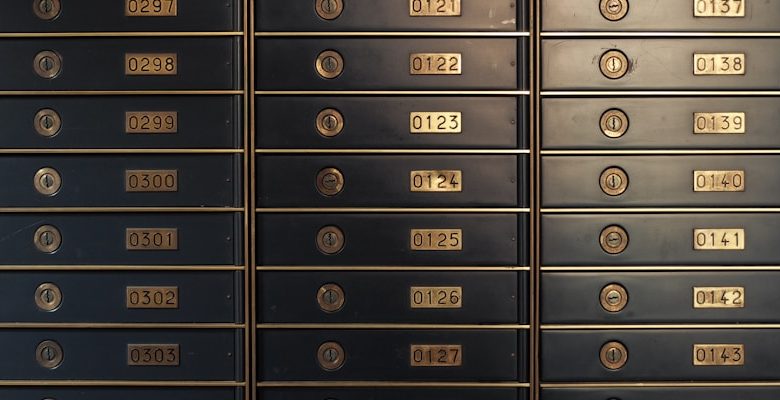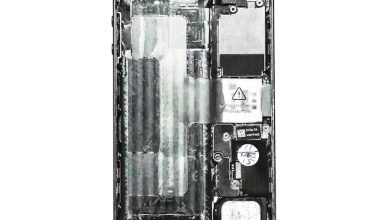How Crypto Wallets Work: A Deep Dive into Digital Asset Storage

- Understanding the basics of crypto wallets
- Exploring the different types of crypto wallets
- The importance of private keys in digital asset storage
- Security measures to protect your crypto assets
- Tips for choosing the right crypto wallet for your needs
- Future trends in digital asset storage technology
Understanding the basics of crypto wallets
Crypto wallets are digital tools that allow users to store, send, and receive cryptocurrencies. These wallets work by generating pairs of public and private keys, which are used to securely sign and verify transactions on the blockchain. Understanding the basics of crypto wallets is crucial for anyone looking to enter the world of digital asset storage.
There are different types of crypto wallets, including hardware wallets, software wallets, and paper wallets. Hardware wallets are physical devices that store the user’s private keys offline, making them less vulnerable to hacking. Software wallets, on the other hand, are digital applications that can be accessed through a computer or smartphone. Paper wallets are physical documents that contain the user’s public and private keys.
When setting up a crypto wallet, users are usually required to create a secure password or passphrase to protect their funds. It is essential to keep this password safe and secure, as losing it could result in the loss of access to the wallet and its contents. Additionally, users should always keep their wallets up to date with the latest security patches to protect against potential vulnerabilities.
One of the key advantages of crypto wallets is that they give users full control over their funds. Unlike traditional banks, which can freeze or seize assets, crypto wallets allow users to manage their digital assets independently. However, this also means that users are solely responsible for the security of their wallets and must take precautions to prevent unauthorized access.
Exploring the different types of crypto wallets
When it comes to crypto wallets, there are several different types available for users to choose from based on their needs and preferences. These wallets can be broadly categorized into hot wallets and cold wallets. Hot wallets are connected to the internet and are more convenient for frequent transactions, while cold wallets are offline and provide added security for long-term storage of digital assets.
Hot wallets include online wallets, mobile wallets, and desktop wallets. Online wallets are web-based and accessible from any device with an internet connection. They are convenient but may be susceptible to hacking. Mobile wallets are apps that can be downloaded on smartphones, allowing users to manage their digital assets on the go. Desktop wallets are software installed on a computer and offer more control over security compared to online wallets.
On the other hand, cold wallets include hardware wallets and paper wallets. Hardware wallets are physical devices that store the user’s private keys offline, making them less vulnerable to cyber attacks. They are considered one of the safest options for storing digital assets. Paper wallets, on the other hand, involve printing the private keys and QR codes on a piece of paper. While they are secure from online threats, they are susceptible to physical damage or loss.
Each type of crypto wallet has its own advantages and disadvantages, so it’s essential for users to assess their needs and preferences before choosing a wallet. Whether prioritizing convenience or security, there is a crypto wallet out there to suit every individual’s digital asset storage needs. By exploring the different types of wallets available, users can find the right balance between accessibility and protection for their cryptocurrency holdings.
The importance of private keys in digital asset storage
Private keys are a crucial component of digital asset storage, serving as the main access point to your funds. Think of them as the key to a safe deposit box – without it, you cannot access what’s inside. These keys are essentially long strings of alphanumeric characters that are unique to each wallet. It is essential to keep your private keys secure and confidential, as anyone who gains access to them can potentially control your digital assets.
Security measures to protect your crypto assets
Cryptocurrency wallets are a popular way to store digital assets securely. However, it is crucial to implement security measures to protect your crypto assets from theft or hacking. Here are some key steps you can take to enhance the security of your crypto wallet:
- Use a hardware wallet: Hardware wallets are considered one of the most secure options for storing cryptocurrencies. These physical devices store your private keys offline, making it much harder for hackers to access your funds.
- Enable two-factor authentication (2FA): Two-factor authentication adds an extra layer of security to your wallet by requiring a second form of verification, such as a code sent to your phone, in addition to your password.
- Keep your private keys offline: Storing your private keys offline, also known as cold storage, can protect them from online threats. Consider using a paper wallet or a hardware device to keep your keys safe.
- Regularly update your wallet software: Developers often release updates to address security vulnerabilities in wallet software. Make sure to keep your wallet up to date to protect your assets from potential threats.
- Avoid sharing sensitive information: Be cautious about sharing your wallet address or private keys with anyone. Keep this information confidential to prevent unauthorized access to your funds.
By following these security measures, you can help safeguard your crypto assets and minimize the risk of theft or hacking. Remember that the security of your cryptocurrency investments is ultimately your responsibility, so it is essential to take proactive steps to protect your funds.
Tips for choosing the right crypto wallet for your needs
When choosing the optimal cryptocurrency wallet for your needs, it is essential to consider various factors to ensure the security and convenience of your digital assets. Here are some tips to help you make an informed decision:
1. **Identify your needs:** Before selecting a crypto wallet, determine the type of digital assets you plan to store and how frequently you will be using them. Consider whether you need a hot wallet for quick access or a cold wallet for long-term storage.
2. **Research different types of wallets:** There are several types of cryptocurrency wallets available, including hardware wallets, software wallets, and paper wallets. Each type has its own unique features and security measures, so it is crucial to understand the differences between them.
3. **Check security features:** Security is a top priority when it comes to storing digital assets. Look for wallets that offer two-factor authentication, encryption, and backup options to protect your funds from unauthorized access.
4. **Consider user-friendliness:** A user-friendly interface can make it easier for you to manage your cryptocurrency holdings. Choose a wallet that is intuitive and easy to navigate, especially if you are new to the world of digital assets.
5. **Read reviews and do your due diligence:** Before making a final decision, take the time to read reviews and testimonials from other users. Research the reputation of the wallet provider and ensure that they have a track record of reliability and security.
By following these tips, you can select the right crypto wallet that meets your specific needs and helps you securely store your digital assets. Remember to regularly update your wallet software and backup your private keys to protect your investments effectively.
Future trends in digital asset storage technology
As technology continues to evolve, the future of digital asset storage is poised for exciting developments. One trend that is gaining momentum is the use of decentralized storage solutions. These platforms allow users to store their assets securely on a network of distributed nodes, reducing the risk of a single point of failure. This approach also offers increased privacy and security compared to traditional centralized storage methods.
Another emerging trend in digital asset storage technology is the integration of artificial intelligence (AI) algorithms. AI can help users optimize their storage strategies by analyzing market trends, predicting asset performance, and recommending the best storage solutions based on individual risk profiles. This can lead to more efficient asset management and potentially higher returns for investors.
Furthermore, advancements in blockchain technology are also shaping the future of digital asset storage. Blockchain-based storage solutions offer increased transparency, immutability, and security for storing assets. By leveraging the decentralized nature of blockchain, users can have greater control over their assets and reduce the reliance on third-party intermediaries.
Overall, the future of digital asset storage technology is moving towards decentralized, AI-driven, and blockchain-based solutions. By staying informed and adapting to these trends, users can ensure their assets are stored securely and efficiently in the ever-changing landscape of digital finance.



